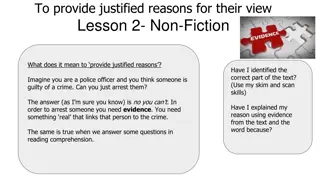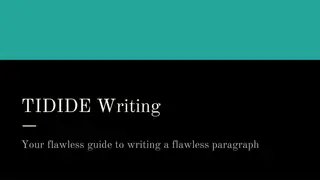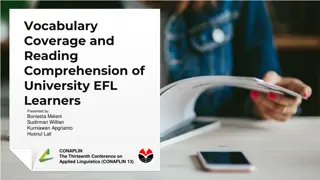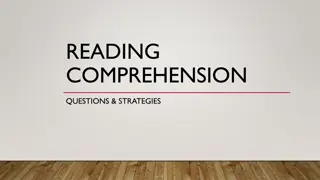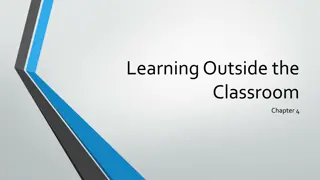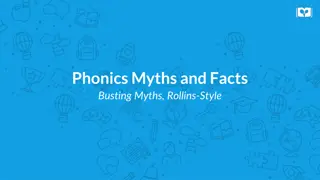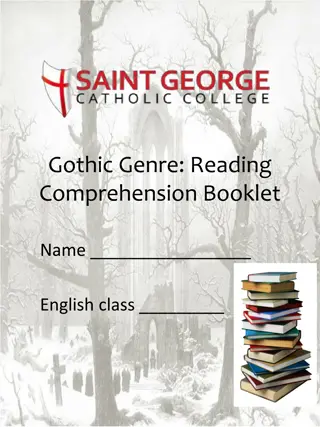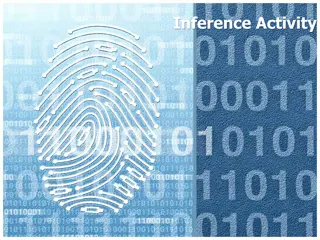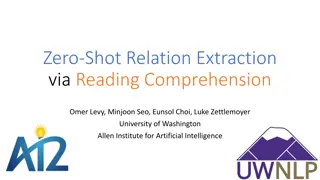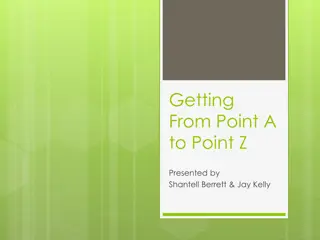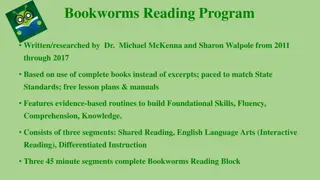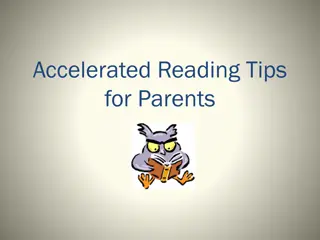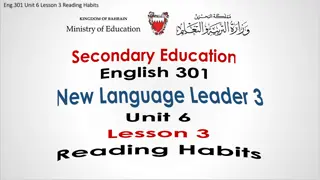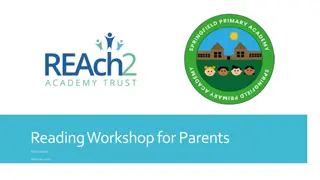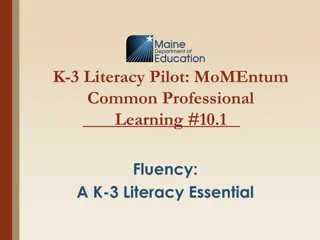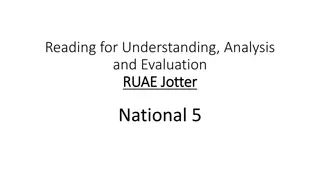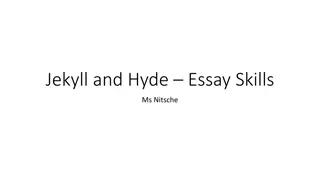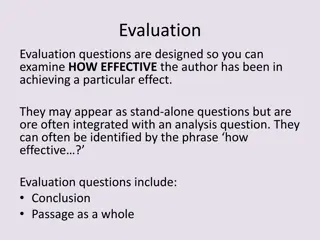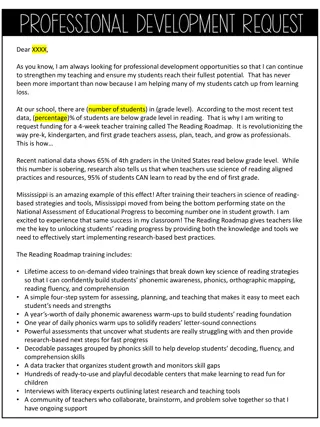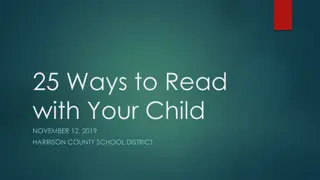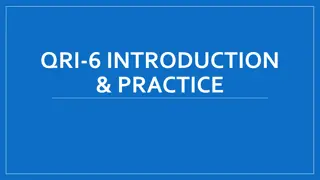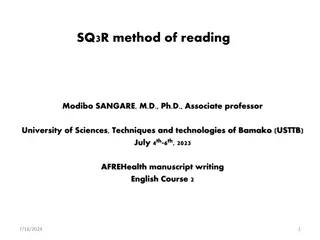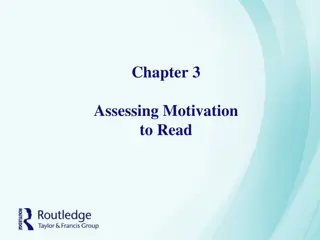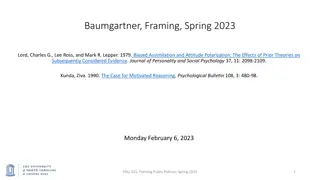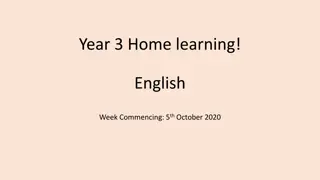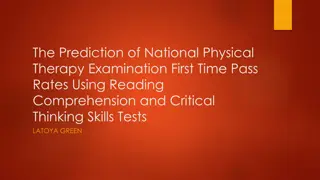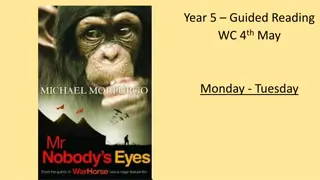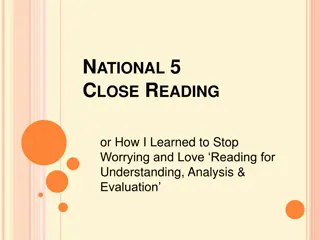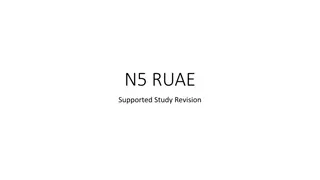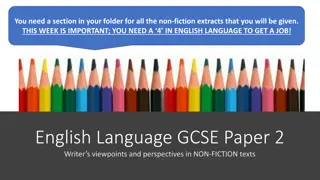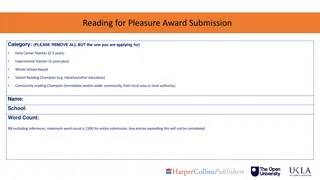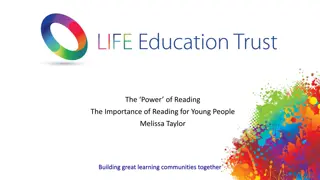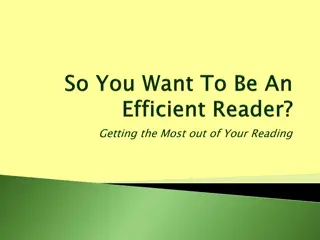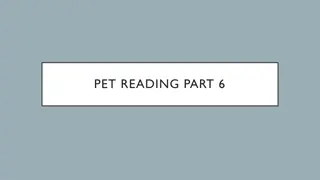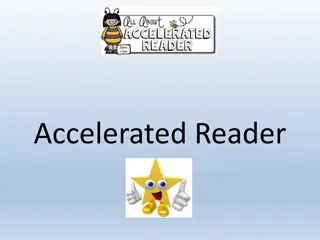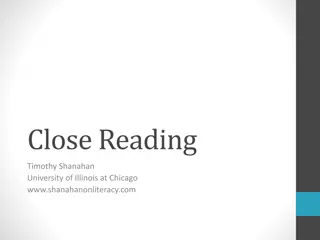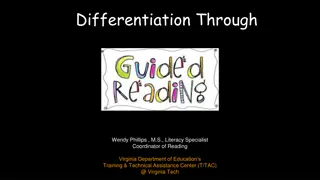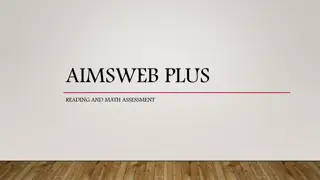Mastering Explicit Textual Evidence in Reading Comprehension
Enhancing reading comprehension by utilizing explicit textual evidence to support ideas and opinions about the text. Learn how to clearly state ideas, specify text references, and comment on evidence to bolster your interpretations effectively.
Download Presentation

Please find below an Image/Link to download the presentation.
The content on the website is provided AS IS for your information and personal use only. It may not be sold, licensed, or shared on other websites without obtaining consent from the author. Download presentation by click this link. If you encounter any issues during the download, it is possible that the publisher has removed the file from their server.
E N D
Presentation Transcript
When we read, we are often asked to answer questions or express our ideas about the text.
In order to let people know that we arent just making stuff up, we should always use Explicit Textual Evidence to support our answers, ideas, or opinions about texts we read.
In real life, people who can back up an opinion or idea with Explicit Textual Evidence are taken more seriously than people who can only give a reason of just because.
The name really says it all Explicit Textual Evidence opinion Explicit = direct Textual = from the text Evidence = support for your answer, idea, or
Giving Explicit Textual Evidence about your answers, ideas, or opinions regarding a text is pretty simple. You just have to do three things: - State your idea - Specify what in the text led you to that idea - Comment on the evidence
State your idea: - State the idea you had about the text. If you are responding to a specific question, be sure your idea addresses the question.
State your idea (continued) Your ideas concerning a text might be about what the text says directly the author s point of view or opinion on the topic a writing technique the author used to emphasize or enhance part of the text the author s purpose for writing or intended audience how well the major supporting ideas and details of the text support the author s main idea and much more!
Specify what in the text led you to that idea: - Pick out the part or parts of the text that led you to your idea. Give that evidence to your reader in the form of a paraphrase quote paraphrase or direct direct quote from the text.
Specify what in the text (continued): - Paraphrasing that the text said without copying directly from the text. Paraphrasing is when you describe something - Example of paraphrasing: - The sentence above says that when you paraphrase you should not copy anything directly from the text.
Specify what in the text (continued): - Direct Quoting part of the text that you copied exactly from the text in your own writing. Direct quotes need to have quotation marks around them. - - Example of direct quoting: - The sentence above says that when you quote directly, you include a short part of the text that you copied exactly from the text (slide 11). Direct Quoting is when you include a short
Specify what in the text (continued): - Here are some sentence starters for specifying what in the text led you to your idea: In the first paragraph, the author says The text states The text describes For example The author explains The author argues For instance
Comment on the Evidence: - Explain how the quote(s) or paraphrase(s) you pointed out as evidence support your idea.
Comment on the Evidence (continued): - Here are some sentence starters for commenting on the evidence: This shows This is because This means This reveals This illustrates This highlights the difference between
Remember, you need to give Explicit Textual Evidence whenever you state an answer, idea or opinion you have about a text. To do so, you need to -State your idea -Specify what in the text led you to that idea -Comment on the evidence


